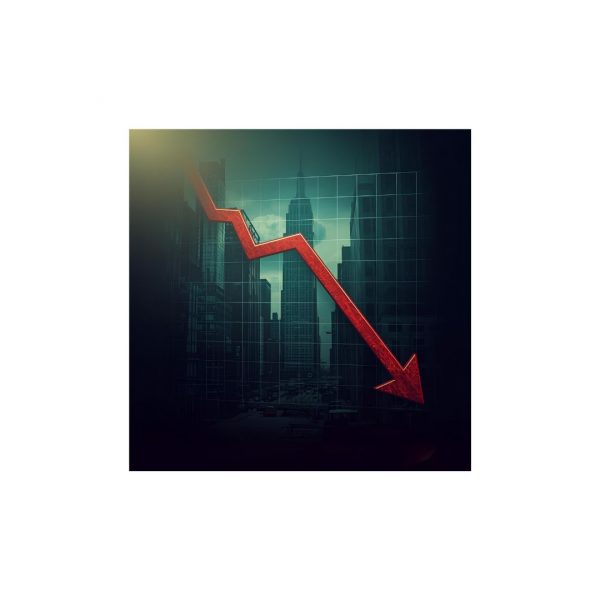What Are Stocks? Become a Company Shareholder – Explained Simply.
Indice dei contenuti
Thinking about investing and wondering What Are Stocks ? You’ve come to the right place! After exploring the world of Bonds and understanding what it means to “lend” your money for interest, today we delve into another fundamental investment: stocks. In this article, you’ll discover What Are Stocks , how they work, and why they’re a key part of becoming a company shareholder.
If the idea of not just being a “creditor,” but becoming a partner or owner of a large company intrigues you, therefore, we’ll explain simply why companies issue them, why people buy them, and the essential concepts for this widely discussed investment.
Get ready to learn how to “join forces” with your favorite companies!
What Are Stocks, Practically Speaking? It’s Like Buying a Piece of a Company.
Let’s forget financial jargon for a moment and think simply. So, exactly What Are Stocks ? Imagine a company that is doing well and needs more money to grow even bigger – maybe to open new stores, build a larger factory, or launch a new product.
How can it find this money? One way, as we’ve seen, is to ask for a loan (issue Bonds). However, another way is to put “pieces” of its ownership up for sale.
That’s exactly What Are Stocks : very small shares of ownership in a company.
When you buy a stock of a certain company (for example, a stock of “Company X”), you are literally becoming one of the owners of that company. You don’t become the owner of a chair or a physical computer, instead, you become the owner of a fraction of its total value and its future profits.
Think of it this way: if a company is divided into a million shares and you buy one, you own one-millionth of that company. You are a partner, albeit a very small one, along with everyone else who has bought at least one share of that company.
This is the fundamental difference from bonds:
- With Bonds: you are a creditor, you have lent money, and the company (or state) owes you a debt. They will pay you interest and return the borrowed principal.
- With Stocks: you are an owner/partner, you have bought a share of the company. They don’t owe you a loan repayment, but you participate (in proportion to your share) in the company’s successes or failures.
The sum of the value of all outstanding shares of a company listed on the stock exchange is what is called its Market Capitalization. It is, practically speaking, how much the company “is worth” on the market based on the price of its shares.
What Are Stocks : Capital Without Debt.
As we’ve said, companies often need large amounts of money to expand. They have two main ways to raise funds:
- Taking on Debt: Asking for loans (for instance, by issuing Bonds or borrowing from banks). In this case, the company commits to returning the borrowed money, plus interest, by a certain date.
- Issuing Stocks (Going Public): Selling shares of company ownership in exchange for money. This operation, when a company decides to make its shares available for public purchase for the first time, is called an Initial Public Offering (IPO). Subsequently, after the IPO, the shares are traded on the secondary market (the Stock Exchange).
But what is the advantage for the company in issuing stocks compared to taking out a loan?
The main advantage is that the money raised by selling stocks is not a debt that the company has to repay. When you sell a part of your ownership, you receive money in exchange, consequently, you don’t have an obligation to “buy it back” (in the sense of returning the initial capital to the investor) by a fixed date, as happens with a loan/bond.
Furthermore, the company does not have fixed interest payments tied to that money (the bond coupons, so to speak). It can decide to distribute part of its profits to the partners (dividends, which we will talk about) but it is not a fixed obligation like paying interest on a debt.
In return, however, the company gives up a part of its control and ownership. The new partners (shareholders) have the right to vote in shareholder meetings (in proportion to the shares owned) and have a right to a share of the profits (if distributed).
So, companies issue stocks mainly to:
- Raise capital (lots of money!) to finance growth, research, new projects, etc.
- Do this without increasing their debts and without the obligation to repay the initial capital or pay fixed interest.
It’s a way to obtain financial resources by “selling” a small part of the company’s future.
What Are Stocks : Why Do People Buy Stocks?
If you buy a stock, you don’t expect the company to give you back the money you spent (like with bonds). So why do people invest in stocks? Mainly for two reasons:
1. Value Growth (Capital Appreciation): If the company you’ve become a partner in is doing well, growing, increasing its profits, and has good future prospects, more people will want to buy its stocks. Consequently, when the demand for a stock rises, its market price also rises. For example, if you buy a stock at 10 euros and after a year its price rises to 15 euros, you could sell it and earn the difference of 5 euros (minus taxes and costs). This increase in value is one of the main ways to earn with stocks and is called capital appreciation. It reflects the fact that the “share of ownership” you hold has become more “valuable” on the market.
2. Dividends (A Share of Profits): Companies that make profits can decide to distribute a portion of them to their partners (the shareholders). This distribution of profits is called a dividend. If you own shares of a company that pays dividends, you will periodically receive (often quarterly or annually) a sum of money for each share you own. However, not all companies pay dividends; some prefer to reinvest all profits to grow faster.
So, people buy stocks because they hope their value will grow over time and/or because they want to receive a share of the profits that the company makes through dividends.
It is essential to remember that these gains are never guaranteed. The stock value can go up, but it can also go down, and the company can decide not to pay dividends, especially if profits are lacking.
How Do Stock Prices Change? Supply, Demand, and Market Dynamics.
After a company has issued its shares for the first time through an IPO, these shares are no longer traded directly with the company, but are bought and sold between investors on the Stock Exchange (the secondary market). Think of the Stock Exchange as a large “market” where people meet to trade shares of companies.
Furthermore, like in any market, the price of a stock is fundamentally determined by the law of Supply and Demand:
- If there are many investors who want to buy a stock (high demand) and few who want to sell it (low supply), the stock price rises.
- Conversely, if there are many investors who want to sell a stock (high supply) and few who want to buy it (low demand), the stock price falls.
But what influences investors’ “desire” to buy or sell the stock of a specific company? Many things! The most important ones (explained simply) include:
- Company Performance: If the company is making a lot of profit, launching successful products, or has good news, investors will be more likely to buy its stocks, causing its price to rise. On the other hand, negative news, losses, or problems will have the opposite effect.
- Future Prospects: It’s not just about how it’s doing now, but what investors expect will happen in the future to the company and the sector it operates in.
- General Economic State: If the economy is doing well, companies tend to do well and investor confidence is high, which pushes stock prices up in general. Conversely, in times of crisis, the opposite happens.
- News and Market “Sentiment”: Global events, political news, and even simple “trends” or collective fears can influence investors’ opinions and thus the supply and demand for certain stocks.
The price of a stock, therefore, fluctuates continuously based on all this information and expectations that meet on the Stock Exchange, in the confrontation between those who want to buy and those who want to sell. This makes stocks potentially very profitable, but also more unpredictable in the short term compared to bonds.
What Are Stocks : Dividend
Remember that by buying stocks you become a partner in a company? Well, just like in a partnership, partners are entitled to a share of the profits that the business generates. This part of the profits that a company decides to distribute to its shareholders is called a dividend.
It is important to understand that the distribution of dividends is not mandatory. It is a decision made by the company’s board of directors, usually based on how much profit has been generated and what the company’s future plans are. Some companies, especially those that are growing rapidly, prefer to reinvest all profits to expand further, rather than distribute them to partners.
When a company decides to pay a dividend, it sets an amount for each single share owned and a date when it will be paid. For example, a company might announce an annual dividend of 0.50 euros per share. If you own 100 shares, you will receive 50 euros.
Dividends are paid with a certain frequency, often every three months (quarterly) or once a year (annually).
In summary: dividends are a slice of company profits that are shared with the owners (shareholders), but only if the company decides to do so.
Risks of Stocks: Understanding the Downside
We’ve seen that with stocks you can earn if their value goes up and/or if the company distributes dividends. However, as with any business where you are a partner, there are also significant risks. It is crucial to be aware of them:
1. Loss of Value (Market Risk): This is the most obvious risk. The price of a stock, as we’ve seen, fluctuates continuously based on supply, demand, news about the company, its sector, and the economy. The price can go down, sometimes significantly and rapidly. If you decide to sell your shares when the price is lower than what you paid for them, you incur a loss on your initial investment. There is no guarantee that the price will go up or remain stable.
2. Business Risk: As a partner, you participate in the company’s fate. If the company does poorly, loses customers, is no longer innovative, or, in the worst case, goes bankrupt and closes down, the value of its shares can plummet to zero. In case of bankruptcy and liquidation, shareholder partners are the last to be reimbursed (creditors come first, such as bondholders, employees, the state, etc.). Therefore, there is a real possibility of losing all or a large part of the invested capital if the company fails.
3. No Guaranteed Returns: Unlike bonds that promise (unless default occurs) fixed interest payments (coupon) and principal repayment at maturity, with stocks you have no guarantee of receiving dividends (the company can decide not to pay them) nor that the stock value will rise. Your gain depends entirely on the performance of the company and the market.
In summary, investing in stocks offers the potential for greater gains than bonds, especially through value growth. However, it also exposes you to higher and less predictable risks, including the possibility of losing a significant portion or all of the invested capital. This is why stocks are generally considered a riskier investment than bonds.
Conclusion: Getting Started with Stocks and Understanding the Risks
In summary, investing in Stocks means becoming a small partner/owner of a company. Unlike bonds (where you are a creditor and expect interest and capital repayment), with stocks you participate directly in the company’s fate.
This type of investment offers the potential for significant gains, especially if the stock value rises over time and if the company distributes part of its profits as dividends.
However, it is essential to remember that stocks are considered a riskier investment than bonds. Their value can go up but also go down (potentially to zero in case of company bankruptcy), and there are no guaranteed returns.
Understanding what Stocks are and their risks is a crucial step for anyone looking to start exploring the world of investments. Don’t let the risks scare you, but face them with awareness and information.
For this reason, in the next articles, we will see how it is possible to invest in a more diversified and potentially less risky way also in the world of stocks (and bonds) through instruments like Mutual Funds and ETFs (Exchange Traded Funds).
Do you have questions about Stocks? Is anything unclear? Write it in the comments below!






